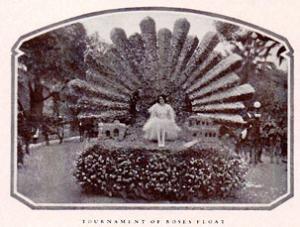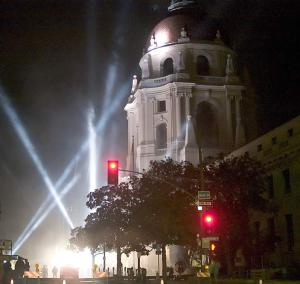History
Originally Pasadena was home to the Tongva/Gabrielino indigenous peoples, who were displaced by the Spanish in the late 18th century.
In the 19th century, Pasadena was settled by Midwesterners seeking warm weather, rich soil and prosperity. As Pasadena grew, its founders’ work ethic and entrepreneurship turned an agrarian town dependent on citrus groves into a strong and diverse economy.
In 1888, business leaders formed the Board of Trade to represent their interests with City Hall and promote a strong local economy. About that same time, these proud Pasadenans decided to promote their fledgling city by decorating a few buggies with flowers and staging a parade in the dead of winter. That modest effort has grown to become the premiere New Year celebration in the world and a testament to Pasadena’s visionaries.
That entrepreneurial spirit turned Pasadena into a resort destination for vacationing Midwesterners such as Charles Wrigley who found Pasadena’s climate to be ideal. The first public Busch Gardens was created on the family’s estate in Pasadena’s Arroyo Seco.

By the early 20th century, Pasadena had become the Crown City of the Valley, a focal point for commerce and industry. Astronomers found the night sky in the local mountains perfect for viewing the stars and planets and built the Mt. Wilson Observatory. Artists and writers discovered the beauty of the San Gabriel Mountains and the Arroyo Seco. Architects, designers and builders found a city that embraced the new, bold and daring.
1920s era civic pride led to the design and construction of an extraordinary civic center anchored by the Public Library, City Hall and Civic Auditorium. In the mid-1940s, Pasadena saw the completion of the Arroyo Seco Parkway (Pasadena Freeway) to downtown Los Angeles, the first freeway in Southern California.
The 1920s also saw the greater Pasadena aree develop as a center of innovsation, with discoveries and inventions as broad ranging as rocketry, transportation and the cheeseburger.

Opened in the 1880s as a technical school Throop Polytechnic was renamed the California Institute of Technology in 1921. Following World War II, Caltech began managing the Jet Propulsion Laboratory which continues to lead our nation’s exploration of our solar system and the farthest reaches of the universe.
Following World War II, as Pasadena’s population grew and its economic base expanded, the city became a center of

commerce and industry. At the same time, Pasadena developed into a shopping destination with full service department stores complementing local and regional retail outlets. As Pasadena expanded into a suburban center, the population grew to more than 100,000 people.
The expansion of the Los Angeles freeway system strategically placed Pasadena at the confluence of the 110, 210, 710 and 134 freeways. In the 1970s, this facilitated Pasadena’s reputation as the headquarters for multi-national corporations.
In the 21st century, Pasadena attracts entrepreneurs, researchers, technology companies, international corporations and entertainment companies.
Our city emerged from the COVID-19 pandemic strong and growing. Recently Pasadena has attracted life sciences companies; electric vehicle design and manufacturing companies; hotel developments, luxury, workforce and affordable housing; young entrepreneurs; eclectic restaurants and unique retailers.
Pasadea is uniquely positioned to be the home of companies large and small, traditional and cutting edge.